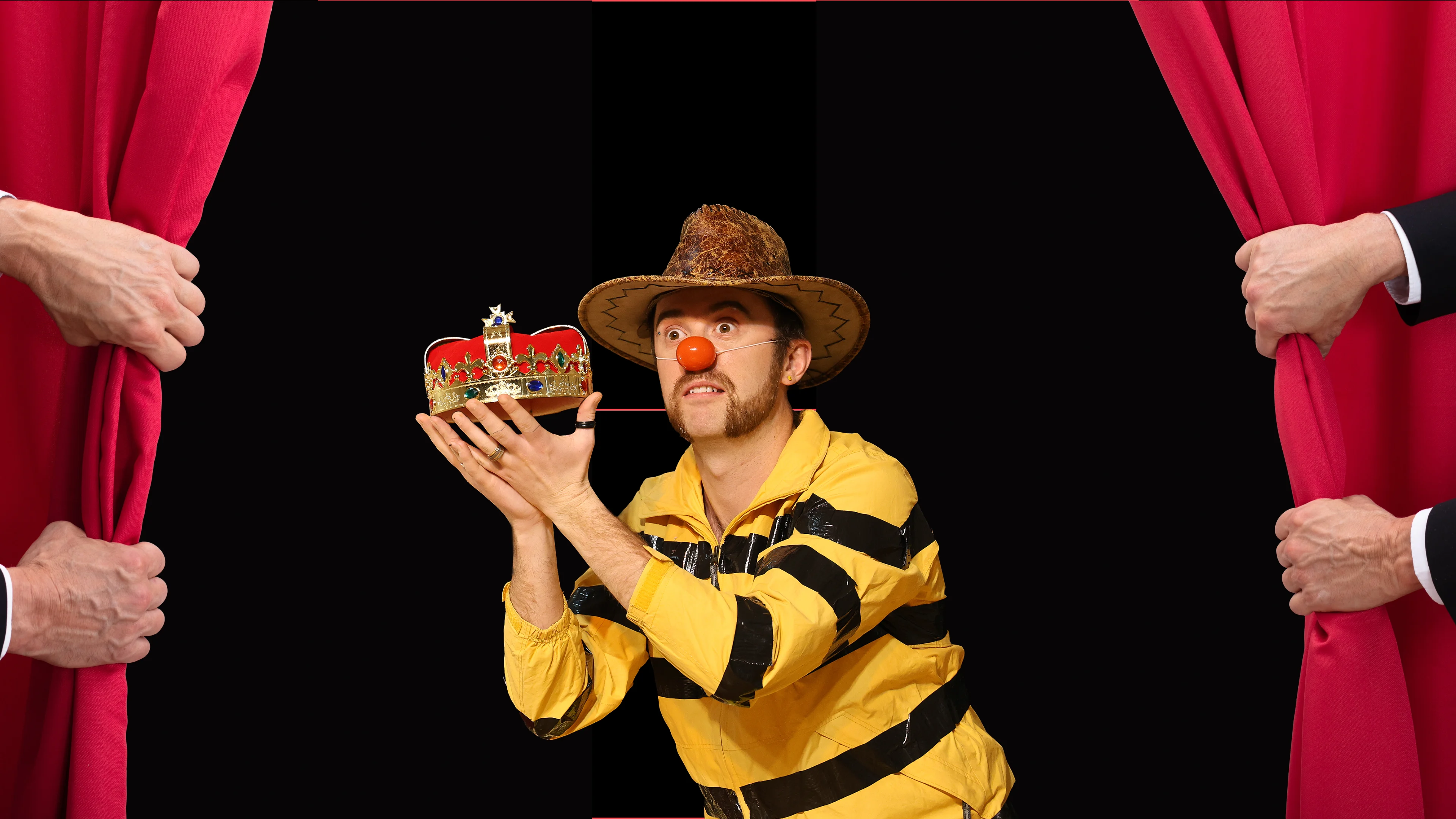
Taster Class In Clown Comedy
Theatre Deli, London
Learn More

A great clown prop doesn’t need to be accurate — it just needs to be recognisable enough for the audience to get what it’s trying to be. The clown’s job is to commit to the fiction as if it’s real, no matter how bad, flimsy or ill-fitting the prop is.
Think about the same prop or costume at different price points: unlimited, £1000, £100, £10, and free. Budget constraints often make things funnier — a “free” spaceship helmet made from a salad bowl can be far more memorable than a perfect replica.
Kids aren’t bound by craftsmanship or realism. They’ll tape a stick to a cereal box and call it a laser gun. Emulating that mentality keeps you playful and stops you getting stuck on perfectionism.
Look at your immediate environment. What could stand in for this prop using only what’s around you? At home that might mean a tea towel cape or a colander crown. On stage, it might be repurposing another performer’s costume or a nearby chair.
If your prop has Velcro, balloons, feathers, or a squeaky element, explore using that property in other props or costumes — especially if a game revolves around that property. Repetition makes it feel intentional and helps lock in the game.
Ask:
What problems will this prop cause in use? (Paper sword keeps bending? Hat keeps falling off?)
What games does the design naturally create? (Huge pockets you can’t find things in; trousers that need constant hitching up.)
What are the consequences of this thing being made this way? (If your “wig” is toilet paper, it might rip, trail behind you, or be snatched away.)
Pick an intentionally hard-to-represent concept (Fear, Big Ben, “The Internet”) and see what absurd stand-ins you can create.
Start with a prop you already have and find multiple other things it could “be” — a shoe might be a phone, a sandwich, or a baby.
If the clown believes this is the real thing, what else might they believe? (If apples are crystal balls, are bananas magic wands?).
The key is to design with the game in mind, not the craft. The audience’s joy often comes from watching you struggle, improvise, and commit to the bit — no matter how implausible the object.
